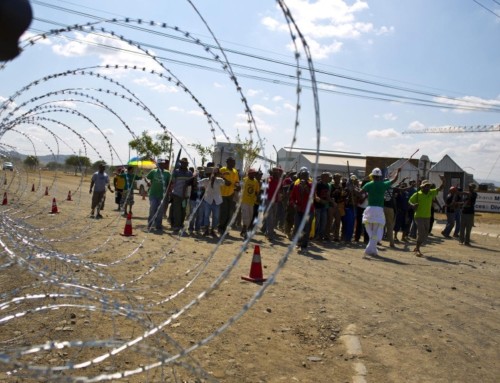
The Great African Rift Valley. Image by Mamonthsafaris.
ZIMSEC O Level Geography Notes: Landfroms resulting from faulting.
Major landforms that result from faulting include:
- Block Mountains
- Rift valleys
- Tilted blocks.
1. Block Mountains

The formation of block-mountains (Horst). Image by WikiCommons
Faults typically occur in series as shown in the diagram above.- The formation of faults is sometimes accompanied by upward movement of the crust
- This gives rise to raised fault-bordered blocks called block mountains.
- These are highlands surrounded by fault lines.
- Either sides of the mountain will be sinking/lower leaving a central raised block.
- The existance of fault lines which border the block on either side results in upward displacedment of the central block and/or downward displacement or sinking of the blocks on either side leaving block mountains to form.
- Examples of block mountains are Ruwenzori Germany’s Black Forests (here they are called Horsts) and the Vosges in France and the Jura mountains.
- The steep sides of both block mountains and rift valleys are known as scarps or sometimes fault scarps.
- Block mountains have very steep pronounced sides.
- The top of block mountains is usually made up of very flat planes known as plateaus.
- At times an entire region is crossed by several parallel series of faults between which the crust has been uplifted or tilted so that a series of block mountains develops.
- This is known as block faulting.
2 Rift Valleys.

Formation of Rift Valleys. Image by Acegeography.
- They occur in association with block mountains.
- Faults occur in series as shown above.
- The formation of the series of faults is sometimes accompanied by downward displacement of the central block.
- The resulting extensive, deep, wide,”V” shaped valley formed by faulting, tear faulting compression forces as a rift valley.
- Two prominent theories have been proposed to explain the formation of rift valleys.
- One attributes them to tension forces while another attributes it to compression forces.
Tension forces theory.
- The following series of diagrams shows the process of Rift valley formation as a result of tension forces.

Tension forces pulling away from each other.

Fault Lines develop.

The Central Block subsides to form a Rift Valley.
- The earth is made up of several layers or strata.
- Tension forces pulling away from each other lead to the development of normal faults which are V-shaped in appearance.
- As further tension occurs, the layers between the faults subside or sink to form a V-shaped valley.
- This theory therefore states that there are the processes involved in the formation of Rift Valleys namely faulting, subsidence and up warping and down warping due to the existence of folded strata.
Compression theory.
- The theory is summarized in the following diagrams.

Compression forces act upon the crust.

Faults develop and the adjoining blocks “ride up” the fault lines.

Leaving a Rift Valley beneath.
- The theory suggests that compression forces result in the development of parallel faults.
- The outside blocks/rock layers “ride up” over the central block/crust which is between them producing a Rift Valley beneath.
- The East African Rift valley which stretches up to the Red Sea in the North and reaches close to Beira in Mozambique to the South is perhaps the most known and influental Rift Valley.
- It contains several lakes including Lake Malawi, Lake Albert, Lake Turkana, Lake Magadi and Lake Tanganyika.
- Its width varies and its sides are sometimes steep and high.
- Some experts say the Rift valley may have been formed by tectonic movement of plates
- These plates move away from one another leading to the development of faults and subsidence of the crust in between.
- This theory might explain why molten rock occasionally wells up within the valley.
3 Tilted Blocks

The formation of Tilted Blocks. Image by Wiki Media Foundation.
- The development of fault lines causes the displacement of parts of the crust.
- Escarpments are formed.
- Uplifted blocks can either be tilted or they may be horizontal.
- When they are horizontal they form block mountains as has already been explained.
- However when they are tilted they form tilted blocks.
- Tilt blocks usually have one pronounced scarp as is the case in Somalia and parts of Ethopia’s Ruwenzori mountains.
- A scarp is a steep slope.
To see the advantages of these landforms please click here.
To access more topics go to the Geography Notes page.





